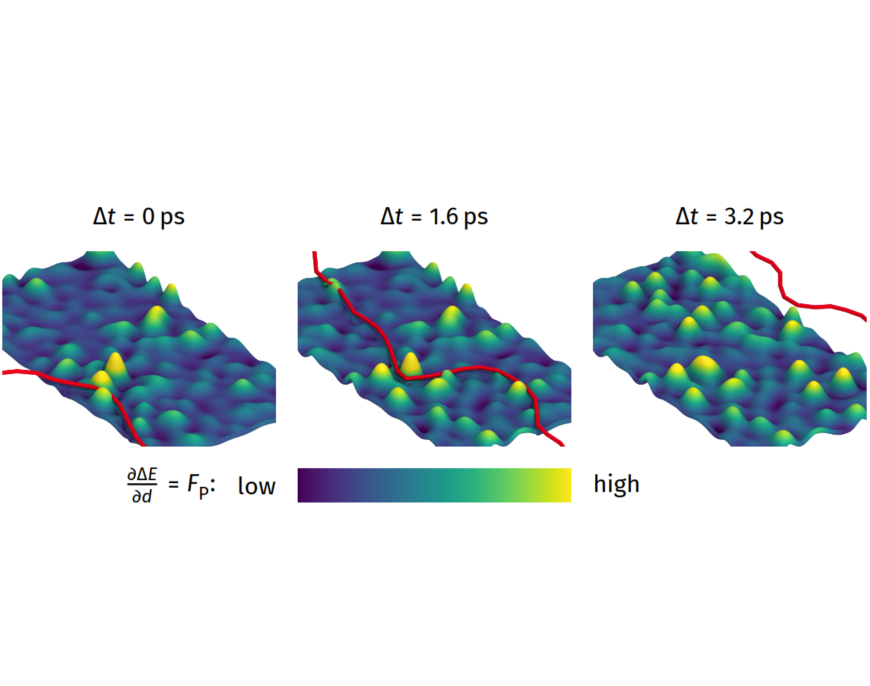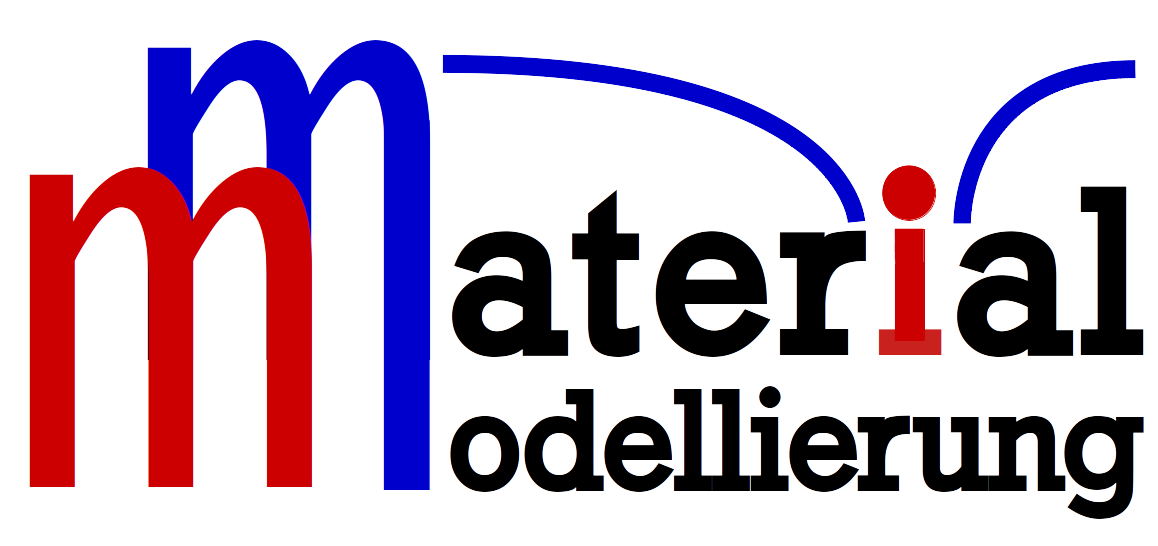Jerky dislocation motion in high-entropy alloys
Members of MM division and MPIE reveal the origin
2023/08/06 by K. Albe
Atomistic computer simulations reproduce the jerky dislocation motion with repeated pinning in random samples without short-range order.The underlying mechanism is directly linked to local fluctuations in Peierls (force/friction) barriers, which lead to dislocation pinning points. The quantification of atomic frictional forces provides predictive design guidelines to tailor dislocation pinning in HEAs.

High- and medium-entropy alloys (HEAs and MEAs) are a new class of metallic materials that contain multiple elements at high concentrations and form solid solutions in contrast to conventional alloys that typically consist of a single principal element with low concentrations of secondary elements. Since entropy is not always the decisive design parameter, they are a subclass of concentrated random alloys. Several HEAs outrival the mechanical properties of conventional alloys, some possess exclusive property combinations such as high strength and high ductility—even down to cryogenic temperatures. The origin of the high strength of HEAs is key for materials design but is still controversially discussed in the community
By combining combining in-situ TEM deformation, atomic resolution analytical scanning transmission electron microscopy (STEM), and atomistic simulations, our study reveals the atomic origin of dislocation pinning points in multi-principal element alloys thereby answering a long-standing question in the materials science and engineering community. We find that no distinct SRO is required for strong dislocation pinning in HEAs as local pinning of the dislocation line is facilitated by a locally increased slope of the GSF curve. This scenario agrees with the established Peierls model but reveals that HEA and specific alloys are susceptible to exceptional Peierls peak heights. In the alloy samples investigated, these changes are highly non-linear and the interaction of Co and Cr leads to the highest density of strong dislocation pinning points. This understanding of the local Peierls stress landscape and the resulting pinning forces acting on dislocations gives access to a different parameter that can be tuned in the design of alloys with increased resistance against the onset of dislocation glide and overall reduced dislocation mobility.



